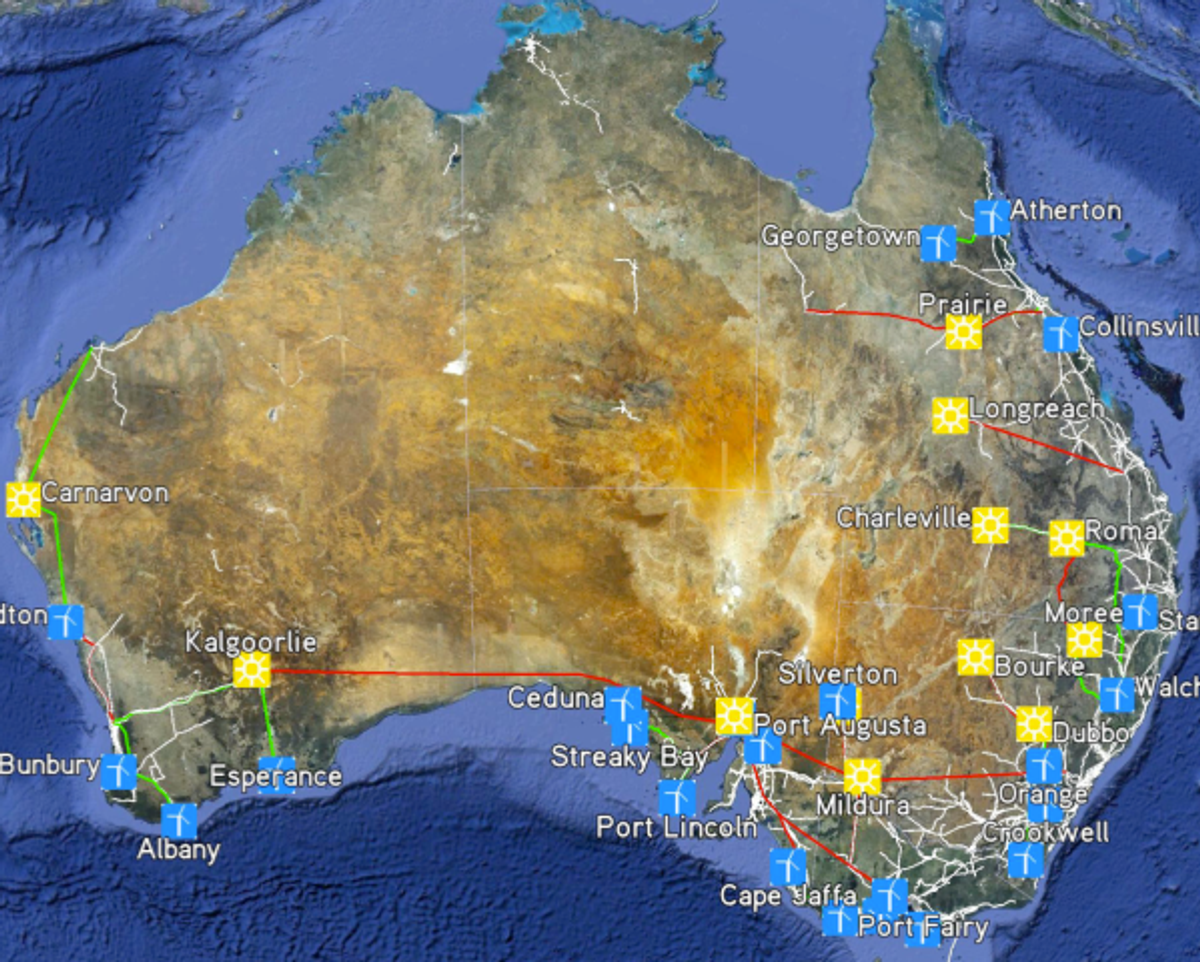The Australian non-profit group Beyond Zero Emissions published a Zero Carbon Australia report [PDF] with a roadmap toward total renewable energy penetration in an astonishing ten years. The plan calls for a 40 percent share of power generation to come from wind (Denmark, by comparison, has a plan to generate 50 percent of its power from wind by 2025), with the balance coming from enormous amounts of concentrating solar thermal installations. To manage variability in renewable power, they incorporate the use of molten salt thermal storage.
This plan even comes with a projected increase in energy usage, up 40 percent from 228 terawatt-hours/year today to 325 TWh/year in 2020. It also, though, comes with a pricetag: $37 billion (Australian dollars, or about $32.3 billion US) per year. The report authors don't find that so unreasonable:
"The required investment of $37 billion/year is the equivalent of 3% of GDP. The extra money spent versus Business-As-Usual to 2020 is the equivalent of $3.40 per person per day, the cost of a cup of coffee."
And after laying out the specific methods, including types of power, grid infrastructure and job creation and requirements, the authors conclude that the idea's technical feasibility now needs only one thing:
"What is required to make this happen is leadership from policymakers and society, with firm decisions made quickly that will allow this transition to occur."
And what are the policymakers up to? Well, 100 percent probably isn't on the table right now, but at least they're talking about 20 percent. This, of course, is more of a renewable energy portfolio standard than the United States currently has (although upwards of 30 states have their own now). But reports like that from Beyond Zero Emissions are cropping up often these days, over and over casting doubt on the arguments that renewables can't supply large proportions of electricity with existing technology. Maybe one of these days someone will listen.
Image via Beyond Zero Emissions
Dave Levitan is the science writer for FactCheck.org, where he investigates the false and misleading claims about science that U.S. politicians occasionally make.



